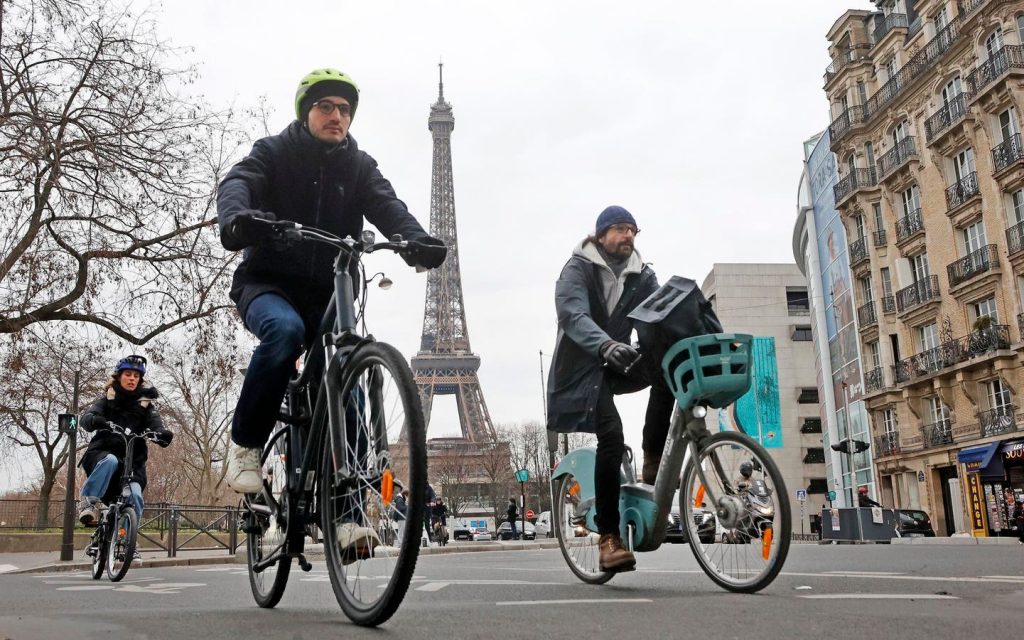Paris is evolving into a city dominated by transport cyclists, according to a recent survey conducted by L’Institut Paris Région. The report, published on April 4, revealed a significant shift in how Parisians are traveling from the suburbs to the city center, with a growing number of people opting for cycling due to the expansion of cycleways. The study, which involved equipping 3,337 Parisians aged 16 to 80 with GPS trackers, highlighted the increasing popularity of cycling as a means of transportation in central Paris, particularly during peak periods.
The cyclists seen in central Paris are not professional riders but everyday commuters, reflecting a shift towards more sustainable and active modes of transportation. The rise in cycling as a preferred mode of travel has been attributed to the city’s efforts to improve cycling infrastructure and promote eco-friendly transportation options. This trend was particularly evident in journeys from the outskirts of Paris to the city center, where the number of cyclists now surpasses that of motorists, a stark contrast to the situation five years ago.
The transportation survey conducted by L’Institut Paris Région was carried out in partnership with fourteen public and private organizations, including local government and rail companies. French TV channel 20 Minutes reported that the city’s cycle paths are constantly busy, reflecting the growing popularity of cycling in Paris. The study also found that in the suburbs, where public transportation options are less dense, car travel remains the primary mode of commuting. However, within the city center, cycling has emerged as a preferred choice for many residents, especially for daily commutes.
Paris Mayor Anne Hidalgo, known for her progressive policies aimed at reducing car dependency and promoting sustainable urban planning, has been at the forefront of the city’s transformation into a bike-friendly metropolis. Measures such as reducing parking spaces, restricting access to SUVs, and closing major roads to motorists have contributed to the rise of cycling in Paris. The positive reception of these policies among residents suggests that Parisians are embracing the shift towards greener and healthier modes of transportation. Hidalgo’s vision of a “15-minute city,” where amenities are easily accessible without the need for long commutes, aligns with Paris’s efforts to create a more sustainable and livable urban environment.
Overall, the transportation survey conducted by L’Institut Paris Région sheds light on the changing mobility patterns in Paris, with cycling emerging as a popular choice for residents traveling to the city center. The increase in cycling as a mode of transportation reflects a broader trend towards sustainable urban planning and active transportation in major cities. The success of Paris’s anti-motoring policies, coupled with the growing popularity of cycling infrastructure, signals a shift towards more eco-friendly and healthier commuting options. With ongoing efforts to prioritize cycling and reduce car dependency, Paris is on track to become a model for sustainable urban transportation in Europe.


